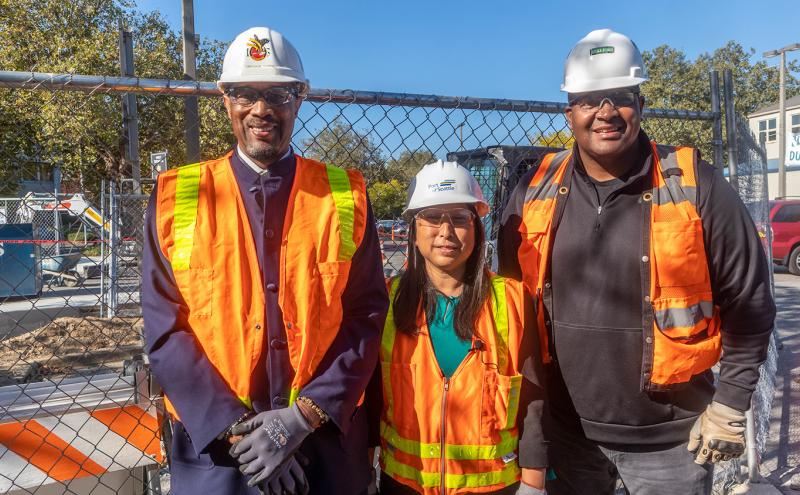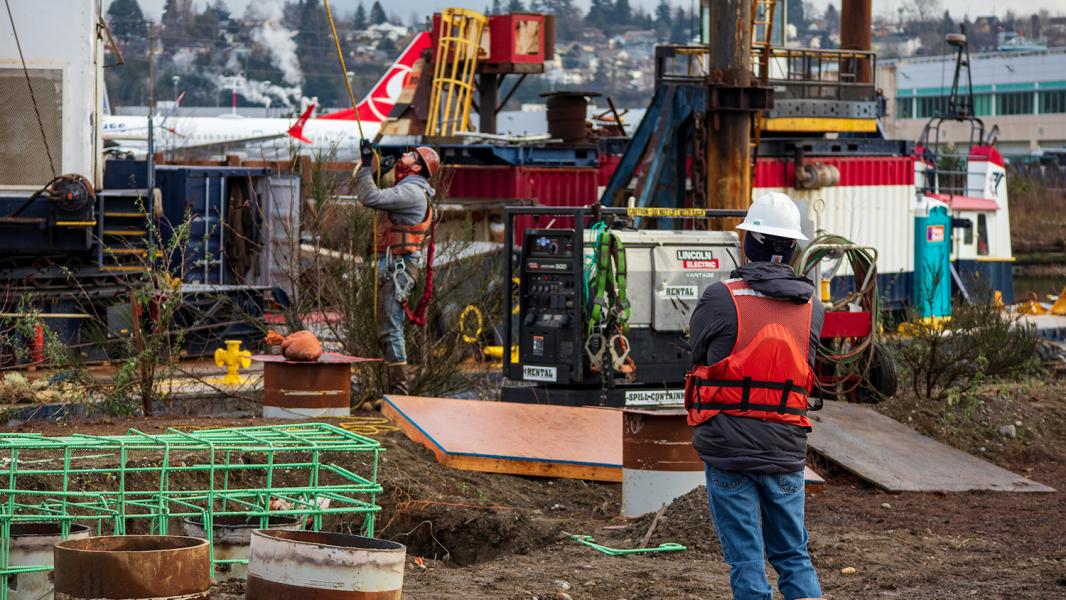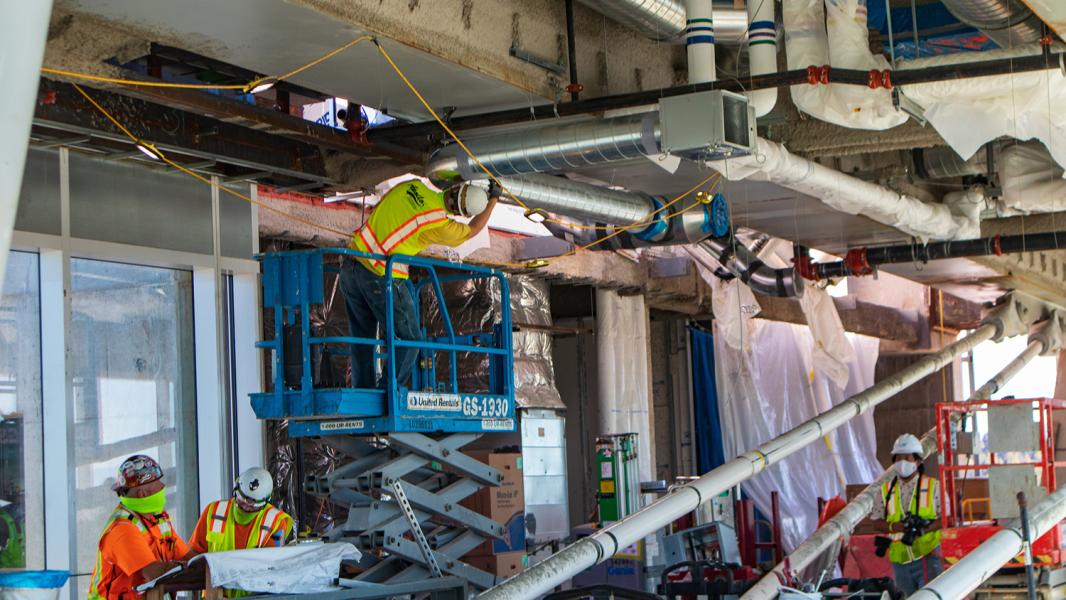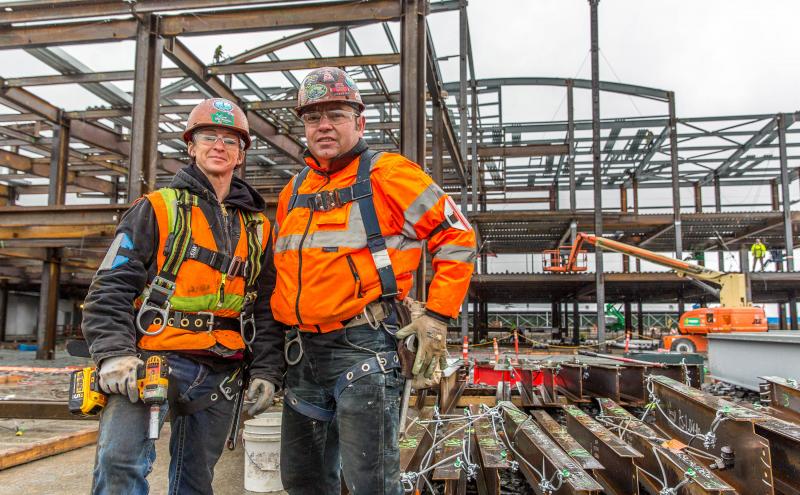
Construction Inclusion Week, October 17-21, builds awareness while celebrating diversity, equity, and inclusion throughout the construction industry. To recognize this effort and highlight the Association of General Contractors’ Culture of Care initiative, Port staff recently created a video that sets expectations for a safe and inclusive worksite. This video will be added to the required safety orientation training provided to all construction workers starting construction work on Port property.
Through its apprenticeship and Priority Hire programs, the Port focuses on providing resources to those who lack economic opportunity, and creating equitable access to family wage jobs to economically distressed communities, women, and people of color. The Port is committed to construction jobsite cultures where all workers feel respected, supported, and safe.
Meet the team leading the way for an inclusive construction industry at the Port of Seattle. Learn how the departments of Engineering and Construction Labor and Workforce Development collaborate on the apprenticeship and Priority Hire programs that ensure worker success. Expanding economic development and improving quality of life for all is part of the Port’s commitment to being an equitable, anti-racist organization.
1. Tell me about your work and how the Port supports equity in the construction industry.
Janice Zahn, Acting Director of Engineering:
Equity is very important to me and I’m very grateful that the Port has been engaged with this work. Apprentices have worked on Port projects for over 25 years, and we have also increased the number of women and minority businesses that contract with the Port through our Diversity in Contracting program. The Port has a huge impact on the region’s economy with over $4 billion planned in capital projects over the next five years. We want to make sure we are truly embracing an inclusive economy, and that everyone has the opportunity for good paying jobs. Priority Hire provides underserved communities and women and BIPOC workers who have not always had an opportunity to access to construction jobs and to thrive. We also want these workers to feel seen, heard, and accepted at all of our construction worksites. We do not accept behaviors like bias, intimidation, or bullying. Job site culture is more than physical hazards — we are also concerned with psychological safety for our workers.
Samuel Pierce, Priority Hire Program Manager:
Equity is an ongoing challenge, not only at the Port, but in the community itself. I interact with Priority Hire workers and apprentices and help create a positive experience in their careers in the construction industry. I’ve been involved in the work to advance equity all my life. It’s a challenge to get companies to open doors to BIPOC and women workers, and I convey the importance of increasing opportunities for these workers in the trades. This work is a huge part of my life; it’s not just a job for me. We are all trying to make an impact on social equity in the Puget Sound region. The Port is doing a good job in trying to support those efforts and in communicating with the region and other public owners.
Sheri Cook, Construction Labor Manager:
I manage the Construction Labor Group that administers Project Labor Agreements (PLA’s) which is a private agreement between the Port and the Seattle King County Construction Building Trades. The Port evaluates the applicability of a PLA for each contract and the assumption will be in favor of employing a PLA for construction contracts that are anticipated to be in excess of $5 million. The Port’s PLA have provisions that includes the work that Sam performs supporting the Priority Hire and Apprenticeship programs.
Carl Hugle, Workforce Development Program Manager:
I work in the Office of Equity, Diversity, and Inclusion, ensuring investments in workforce development, and working to provide equitable access for those who are underserved and underrepresented in Port industries. I support our efforts to make sure jobs that are created are available for pre-apprentices and I work with pre-apprenticeship programs to stress the importance of outreach in underserved communities. I support Sam’s work to make sure job sites are safe and habitable for -apprentices, and coordinate efforts to prevent hazing, harassment, and bullying. A huge part of the work is our efforts to retain folks, and make our investments go as far as they can, particularly for women and people of color.

2. How can we create a Culture of Care at the Port and make worksites safe places for all?
Sam: This work is about communicating to contractors and apprentices and with people of color on a job site, and letting them know they have someone to reach out to. We also make sure they go through safety training and have access to documents they need. There are so many dynamics, not only how they are being treated, but making sure they don’t feel isolated and that they can have someone to talk to. In our work for safe, acceptable worksites, we need communication on both Port job sites and regional job sites. When companies start to buy in, there will be more oversight for advancing safe worksites. Things don’t change overnight, and sometimes people are resistant to change, but we have to stay committed. We also have to come up with an approach to get our partners in the trades more involved in diversity and inclusion efforts.
Carl: We take a multi-pronged approach to safe worksites. To improve retention in this career field, we make sure there is access to childcare, transportation, tools, boots, and all the things workers need to do their jobs for our apprentices. We work with AGC to help create a framework for respectful worksites, and make sure union partners at table to be a part of this framework. We’ve been meeting regularly with our regional partners to compare language around respectful worksites policies and defining best practices. We also need to have folks on our job sites that apprentices can come to if there is a challenge.
Janice: A respectful worksite is essential for all workers to succeed. We are thankful for partnerships with AGC and labor partners focused on jobsite culture that centers on worker success, although recognizing we are not there yet. The Port is committed to being an anti-racist organization and we openly talk about what behaviors are unacceptable. We set the expectation with our contractors of a culture where everyone feels included and like they belong. Our culture is demonstrating that showing up and actively being anti-racist creates positive change and a safe space. With our expanding capital program, we will need even more workers to be part of delivering our many Port projects and we want all workers to be able to do their best work on our jobsites.

3. What are the biggest challenges the industry faces? What more can be done to increase diversity and inclusion on an industry level?
Sam: Getting people to change how they feel about women and people of color coming to work sites is one of the biggest challenges. It’s changing the hearts of people. How do you do that? That is the key to any change. You can make policy changes, but the hardest part is accepting that people of color and women deserve the same opportunity to contribute to the community. People are talented no matter what they look like. We are working to make that change, starting with parents working with their kids, and advancing a community where people of color are not exploited or mistreated. Once that happens, everything starts to fall in place.
When you bring on young people to work in a career pathway and they see someone like themselves in leadership, they see a role model who is accomplishing those goals, and they are able to believe possibilities for a better future for themselves. The need for representation in leadership roles is important, so young people can say "I can become that. I can be a leader and accomplish something more." This is how you are slowly able to create change.
Carl: For the growth of the industry, having a workforce that equitably reflects the communities we serve and that has the opportunity to earn prevailing wages is a solution that has a far-reaching impact. This is part of how we solve the workforce shortage in our region. Having a diverse workforce leads to greater engagement, increases productivity, and diverse teams excel in decision-making and innovation. This means increasing leadership opportunities for women and people of color because representation matters in those settings.
Janice: This is where policies and procedures are essential. We are in our third year of the Priority Hire program, and continue to be a pathway to bring workers from distressed zip codes, and women and workers of color.









